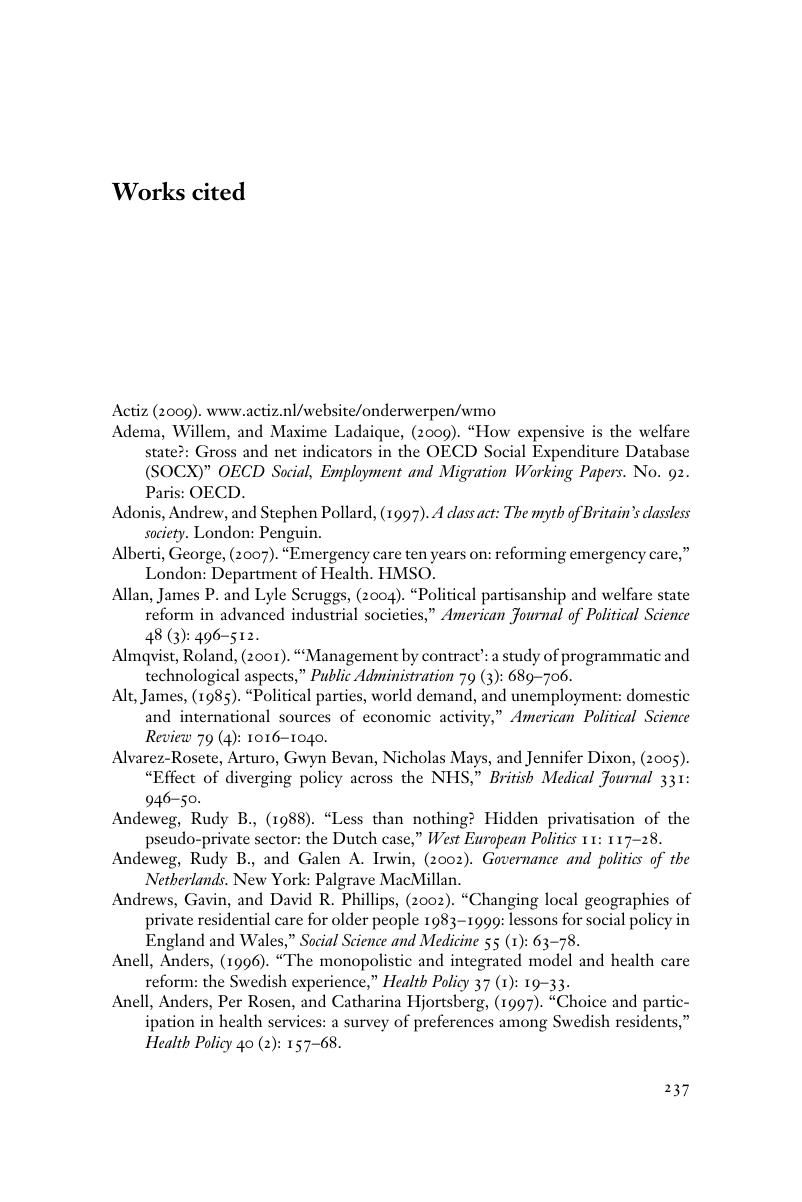Works cited
Published online by Cambridge University Press: 05 July 2011
Summary

- Type
- Chapter
- Information
- Making Markets in the Welfare StateThe Politics of Varying Market Reforms, pp. 237 - 266Publisher: Cambridge University PressPrint publication year: 2011

